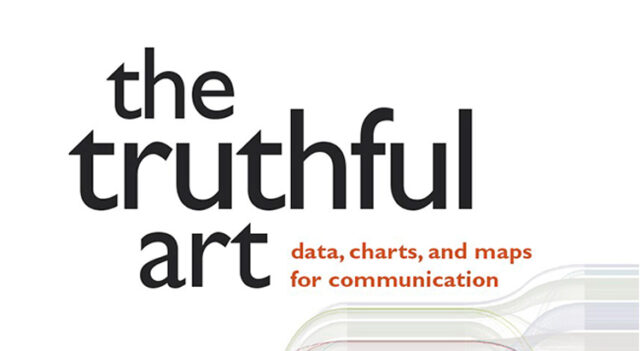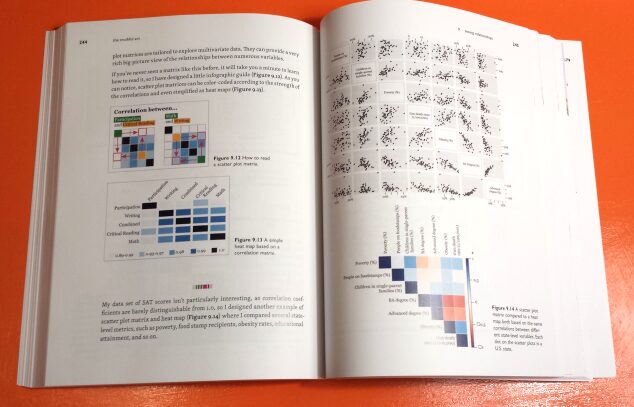

Alberto Cairo is a wonderful writer whose writing skills have always been superlative in almost every respect. With his book, The Functional Art, he very successfully laid the foundation of information graphics and visualization. Through his book, one became able to learn how to process all the information one is bombarded with in their daily. Exposure to more information than you know what to do with is also as much a problem as is lack of information and not being able to process all those words and digits is scary, to say the least. However, those who have read the first book can be confident in that they have a better understanding of the information that fills the world. The quality of the first book led me to excitedly get The Truthful Art.
In the second installment and follow up to his first book, The Truthful Art, Alberto explains numerous things which are important in the process of information interpretation. The book, in a very succinct manner, explains the role of infographics and data visualization in the world. The book also teaches the readers how they can become critical thinkers. Critical thinking has become an indispensable trait in a world where we are surrounded with an abundance of information.
The book also discusses the importance of truthfulness in any data visualization. Including incorrect information can be misleading and even harmful. Thus, it is pertinent to first cross check the information you add to any data visualization or infographics and ensure the accuracy of the content you produce.

The book spends a lot of time exploring and explaining statistical concepts and data handling involved in data visualization which don’t seem like interesting topics but are necessary for anyone who wants to have a deeper understanding of the subject.
The writing style of the book can be described as to the point, informal, and very friendly. Not once while reading the book did I feel that the writing style was presumptuous or filled with lots of technical jargon. As I have already read the first book, it was much easier to understand what Alberto was trying to explain in this one. The informal style of the book makes the subject (which can be very complicated and difficult if you try to learn it through a more formal source) so much easier and encourages the reader to think with confidence rather than just mugging up the thoughts of the author.
Knight Chair in Visual Journalism at the School of Communication of the University of Miami (UM) discusses the ideas of truth, information, and visualizations in the most succinct ways possible which is why it is important that you choose his books to learn about the subject. The third installment will enlighten us more on the subject and as a fan, I will be consistently waiting for it. In the meantime, if you have not yet read The Truthful Art book, you can find it here.













